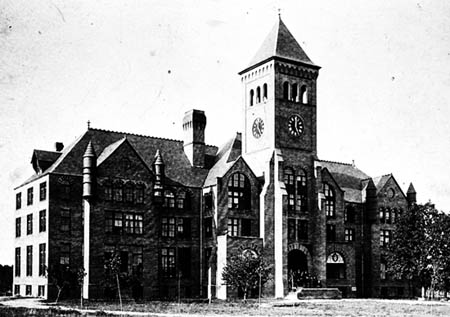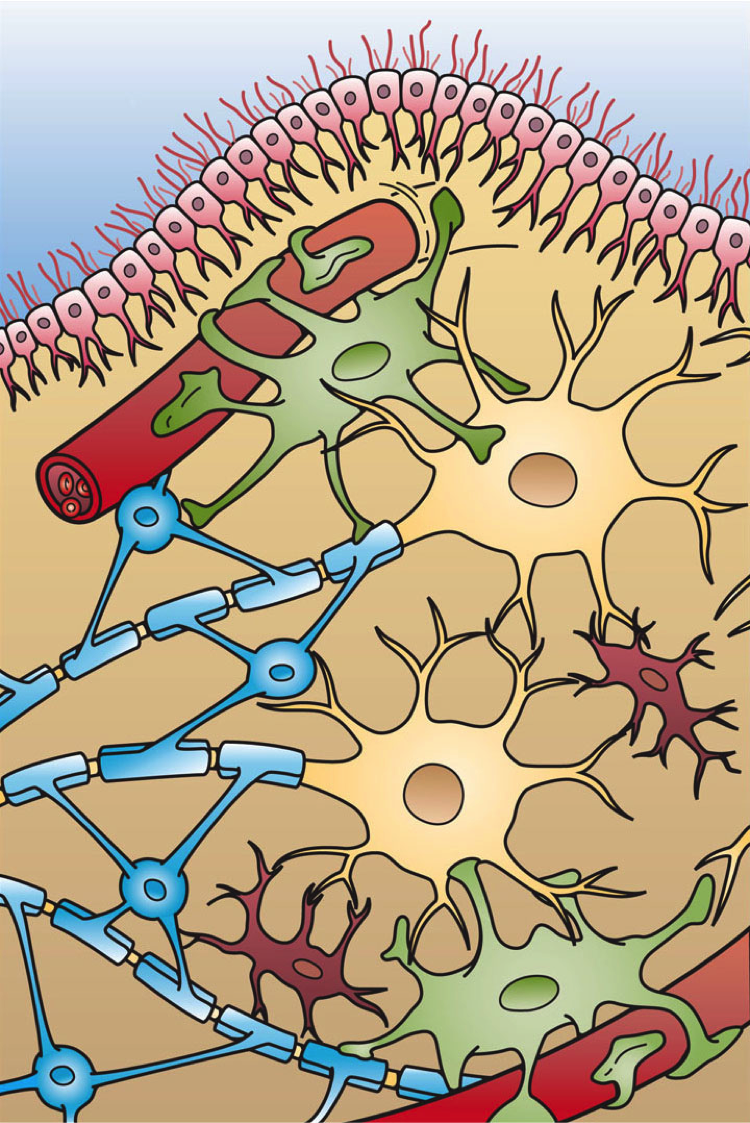|
Thomas Tedder
Thomas Fletcher Tedder, Ph.D., (born May 14, 1956) is an American immunologist. He is best known for his work in the fields of B lymphocyte biology and regulation. He is currently the Alter E. Geller Professor for Research in Immunology at Duke University. Career Tedder received his Ph.D. in molecular cell biology from the University of Alabama in 1984 and completed his postdoctoral training as a research fellow in pathology at Harvard Medical School. He was a faculty member at Dana–Farber Cancer Institute and Harvard Medical School from 1985 to 1998 before joining Duke University in 1993 as its founding chairman of immunology. Tedder studies the structure and function of B lymphocyte cell surface molecules that regulate B cell function, activation, and signal transduction. He currently has 401 total publications and 25 issued patents relating to B cells and their products, including CD19, CD20, CD22, CD83, and L-selectin. He has founded four biotherapeutic companies, including ... [...More Info...] [...Related Items...] OR: [Wikipedia] [Google] [Baidu] |
B Lymphocyte
B cells, also known as B lymphocytes, are a type of white blood cell of the lymphocyte subtype. They function in the humoral immunity component of the adaptive immune system. B cells produce antibody molecules which may be either secreted or inserted into the plasma membrane where they serve as a part of B-cell receptors. When a naïve or memory B cell is activated by an antigen, it proliferates and differentiates into an antibody-secreting effector cell, known as a plasmablast or plasma cell. Additionally, B cells present antigens (they are also classified as professional antigen-presenting cells (APCs)) and secrete cytokines. In mammals, B cells mature in the bone marrow, which is at the core of most bones. In birds, B cells mature in the bursa of Fabricius, a lymphoid organ where they were first discovered by Chang and Glick, which is why the 'B' stands for bursa and not bone marrow as commonly believed. B cells, unlike the other two classes of lymphocytes, T cells ... [...More Info...] [...Related Items...] OR: [Wikipedia] [Google] [Baidu] |
Duke University
Duke University is a private research university in Durham, North Carolina. Founded by Methodists and Quakers in the present-day city of Trinity in 1838, the school moved to Durham in 1892. In 1924, tobacco and electric power industrialist James Buchanan Duke established The Duke Endowment and the institution changed its name to honor his deceased father, Washington Duke. The campus spans over on three contiguous sub-campuses in Durham, and a marine lab in Beaufort. The West Campus—designed largely by architect Julian Abele, an African American architect who graduated first in his class at the University of Pennsylvania School of Design—incorporates Gothic architecture with the Duke Chapel at the campus' center and highest point of elevation, is adjacent to the Medical Center. East Campus, away, home to all first-years, contains Georgian-style architecture. The university administers two concurrent schools in Asia, Duke-NUS Medical School in Singapore (e ... [...More Info...] [...Related Items...] OR: [Wikipedia] [Google] [Baidu] |
University Of Alabama
The University of Alabama (informally known as Alabama, UA, or Bama) is a public research university in Tuscaloosa, Alabama. Established in 1820 and opened to students in 1831, the University of Alabama is the oldest and largest of the public universities in Alabama as well as the University of Alabama System. It is classified among "R1: Doctoral Universities – Very high research activity". The university offers programs of study in 13 academic divisions leading to bachelor's, master's, education specialist, and doctoral degrees. The only publicly supported law school in the state is at UA. Other academic programs unavailable elsewhere in Alabama include doctoral programs in anthropology, communication and information sciences, metallurgical engineering, music, Romance languages, and social work. As one of the first public universities established in the early 19th century southwestern frontier of the United States, the University of Alabama has left a cultural impr ... [...More Info...] [...Related Items...] OR: [Wikipedia] [Google] [Baidu] |
Dana–Farber Cancer Institute
Dana–Farber Cancer Institute is a comprehensive cancer treatment and research institution in Boston, Massachusetts. Dana–Farber is the founding member of Dana–Farber/Harvard Cancer Center, Harvard's Comprehensive Cancer Center designated by the National Cancer Institute, and one of the 15 clinical affiliates and research institutes of Harvard Medical School. As of 2021, Dana–Farber is ranked the #3 cancer hospital in the world. Two Nobel laureates in Physiology or Medicine are among its past and present faculty. Dana–Farber's research discoveries include the development of the highly successful Gleevec to treat chronic myeloid leukemia. Overview Dana–Farber employs more than 4,855 full-time and part-time people, 529 faculty, and has annual gross revenues of about $1,733,386,000. All faculty and postdoctoral research fellows at Dana–Farber hold the equivalent academic positions concurrently at Harvard University. There are more than 523,425 adult and pediatric pat ... [...More Info...] [...Related Items...] OR: [Wikipedia] [Google] [Baidu] |
Harvard Medical School
Harvard Medical School (HMS) is the graduate medical school of Harvard University and is located in the Longwood Medical and Academic Area, Longwood Medical Area of Boston, Massachusetts. Founded in 1782, HMS is one of the oldest medical schools in the United States and is consistently ranked first for research among medical schools by ''U.S. News & World Report''. Unlike most other leading medical schools, HMS does not operate in conjunction with a single hospital but is directly affiliated with several teaching hospitals in the Boston area. Affiliated teaching hospitals and research institutes include Dana–Farber Cancer Institute, Massachusetts General Hospital, Brigham and Women's Hospital, Beth Israel Deaconess Medical Center, Boston Children's Hospital, McLean Hospital, Cambridge Health Alliance, The Baker Center for Children and Families, and Spaulding Rehabilitation Hospital. History Harvard Medical School was founded on September 19, 1782, after President Joseph Wi ... [...More Info...] [...Related Items...] OR: [Wikipedia] [Google] [Baidu] |
Biotherapeutic
A biopharmaceutical, also known as a biological medical product, or biologic, is any pharmaceutical drug product manufactured in, extracted from, or semisynthesized from biological sources. Different from totally synthesized pharmaceuticals, they include vaccines, whole blood, blood components, allergenics, somatic cells, gene therapies, tissues, recombinant therapeutic protein, and living medicines used in cell therapy. Biologics can be composed of sugars, proteins, nucleic acids, or complex combinations of these substances, or may be living cells or tissues. They (or their precursors or components) are isolated from living sources—human, animal, plant, fungal, or microbial. They can be used in both human and animal medicine. Terminology surrounding biopharmaceuticals varies between groups and entities, with different terms referring to different subsets of therapeutics within the general biopharmaceutical category. Some regulatory agencies use the terms ''biological medi ... [...More Info...] [...Related Items...] OR: [Wikipedia] [Google] [Baidu] |
Inebilizumab
Inebilizumab, sold under the brand name Uplizna, is a medication for the treatment of neuromyelitis optica spectrum disorder (NMOSD) in adults. The most common adverse reactions include urinary tract infection, headache, joint pain (arthralgia), nausea and back pain. Inebilizumab is a humanized mAb that binds to and depletes CD19+ B cells including plasmablasts and plasma cells. The U.S. Food and Drug Administration (FDA) considers it to be a first-in-class medication. Medical uses Inebilizumab is indicated for the treatment of neuromyelitis optica spectrum disorder (NMOSD) in adults with a particular antibody (patients who are anti-aquaporin-4 or AQP4 antibody positive). NMOSD is a rare autoimmune disorder in which immune system cells and autoantibodies attack and damage the optic nerves and spinal cord. NMOSD can be associated with antibodies that bind to a protein called aquaporin-4 (AQP4). Binding of the anti-AQP4 antibody appears to activate other components of the i ... [...More Info...] [...Related Items...] OR: [Wikipedia] [Google] [Baidu] |
Neuromyelitis Optica
Neuromyelitis optica spectrum disorders (NMOSD), including neuromyelitis optica (NMO), are autoimmune diseases characterized by acute inflammation of the optic nerve (optic neuritis, ON) and the spinal cord (myelitis). Episodes of ON and myelitis can be simultaneous or successive. A relapsing disease course is common, especially in untreated patients. In more than 80% of cases, NMO is caused by immunoglobulin G autoantibodies to aquaporin 4 ( anti-AQP4), the most abundant water channel protein in the central nervous system. A subset of anti-AQP4-negative cases is associated with antibodies against myelin oligodendrocyte glycoprotein ( anti-MOG). Rarely, NMO may occur in the context of other autoimmune diseases (e.g. connective tissue disorders, paraneoplastic syndromes) or infectious diseases. In some cases, the etiology remains unknown ( idiopathic NMO). Multiple sclerosis (MS) and NMO can be similar in clinical and radiological presentation, and MS may very rarely present with ... [...More Info...] [...Related Items...] OR: [Wikipedia] [Google] [Baidu] |
Uplizna
Inebilizumab, sold under the brand name Uplizna, is a medication for the treatment of neuromyelitis optica spectrum disorder (NMOSD) in adults. The most common adverse reactions include urinary tract infection, headache, joint pain (arthralgia), nausea and back pain. Inebilizumab is a humanized mAb that binds to and depletes CD19+ B cells including plasmablasts and plasma cells. The U.S. Food and Drug Administration (FDA) considers it to be a first-in-class medication. Medical uses Inebilizumab is indicated for the treatment of neuromyelitis optica spectrum disorder (NMOSD) in adults with a particular antibody (patients who are anti-aquaporin-4 or AQP4 antibody positive). NMOSD is a rare autoimmune disorder in which immune system cells and autoantibodies attack and damage the optic nerves and spinal cord. NMOSD can be associated with antibodies that bind to a protein called aquaporin-4 (AQP4). Binding of the anti-AQP4 antibody appears to activate other components of the i ... [...More Info...] [...Related Items...] OR: [Wikipedia] [Google] [Baidu] |
Duke University Faculty
Duke is a male title either of a monarch ruling over a duchy, or of a member of royalty, or nobility. As rulers, dukes are ranked below emperors, kings, grand princes, grand dukes, and sovereign princes. As royalty or nobility, they are ranked below princess nobility and grand dukes. The title comes from French ''duc'', itself from the Latin ''dux'', 'leader', a term used in republican Rome to refer to a military commander without an official rank (particularly one of Germanic or Celtic origin), and later coming to mean the leading military commander of a province. In most countries, the word ''duchess'' is the female equivalent. Following the reforms of the emperor Diocletian (which separated the civilian and military administrations of the Roman provinces), a ''dux'' became the military commander in each province. The title ''dux'', Hellenised to ''doux'', survived in the Eastern Roman Empire where it continued in several contexts, signifying a rank equivalent to a captain ... [...More Info...] [...Related Items...] OR: [Wikipedia] [Google] [Baidu] |
University Of Alabama Alumni
A university () is an institution of higher (or tertiary) education and research which awards academic degrees in several academic disciplines. ''University'' is derived from the Latin phrase ''universitas magistrorum et scholarium'', which roughly means "community of teachers and scholars". Universities typically offer both undergraduate and postgraduate programs. The first universities in Europe were established by Catholic Church monks. The University of Bologna (), Italy, which was founded in 1088, is the first university in the sense of: *being a high degree-awarding institute. *using the word ''universitas'' (which was coined at its foundation). *having independence from the ecclesiastic schools and issuing secular as well as non-secular degrees (with teaching conducted by both clergy and non-clergy): grammar, rhetoric, logic, theology, canon law, notarial law.Hunt Janin: "The university in medieval life, 1179–1499", McFarland, 2008, , p. 55f.de Ridder-Symoens, H ... [...More Info...] [...Related Items...] OR: [Wikipedia] [Google] [Baidu] |



